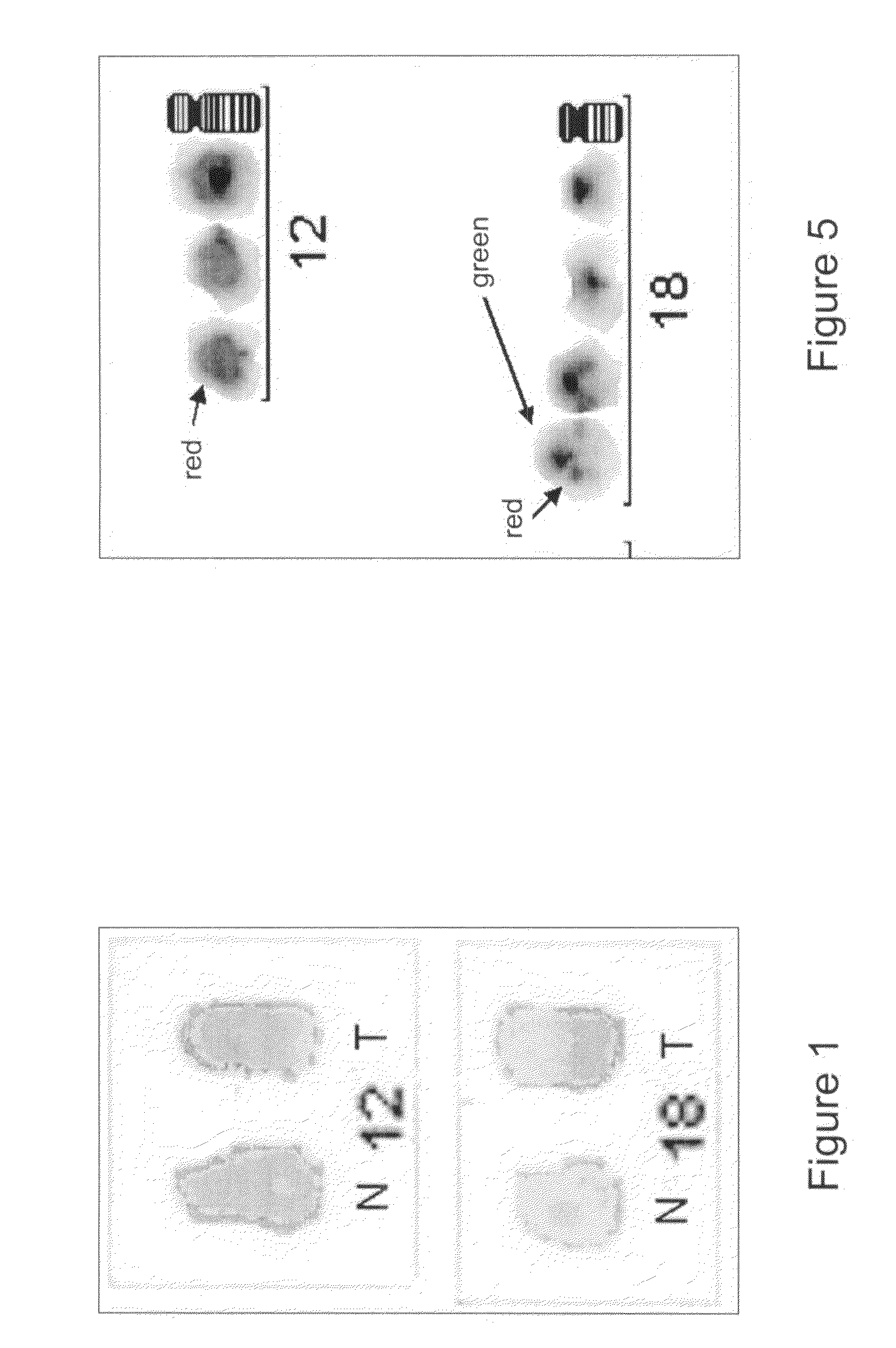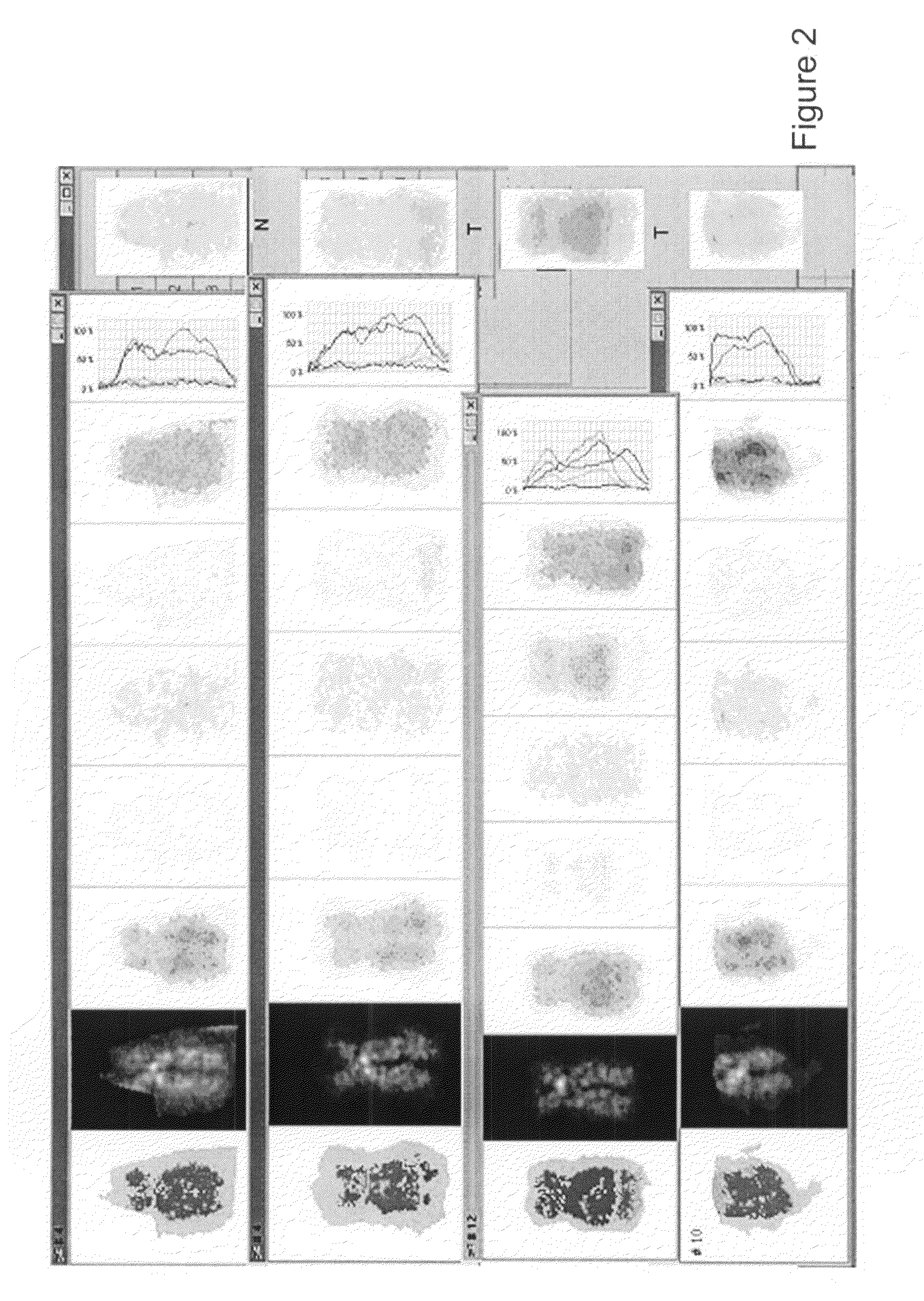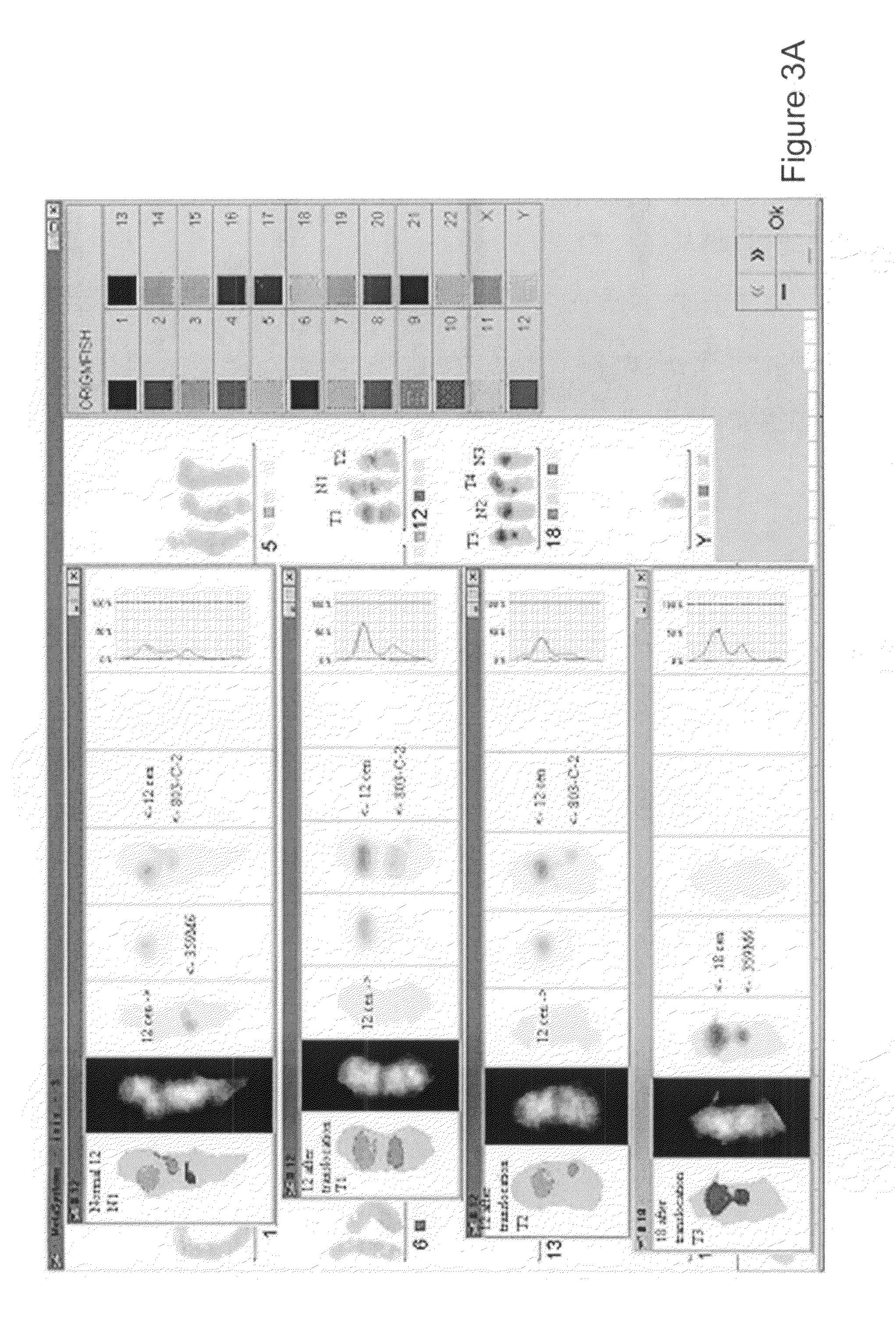Method for the diagnosis of lymphoproliferative diseases
a lymphoproliferative disease and lymphoid technology, applied in the field of new methods for diagnosis and treatment of lymphoid disease, can solve the problems of inability to definitively diagnose ctcl, difficult diagnosis of mf, and inability to detect m
- Summary
- Abstract
- Description
- Claims
- Application Information
AI Technical Summary
Benefits of technology
Problems solved by technology
Method used
Image
Examples
example 1
[0074]Identification of a Translocation in Chromosome 12
[0075]a) Cell Culture and Conventional Chromosome Preparations
[0076]Peripheral blood lymphocytes were isolated with Ficoll-Isopaque density centrifugation, washed with RPMI 1640 (Gibco BRL, Life Technologies) and cultured for 3 days in RPMI 1640, in the presence of 20% Fetal Bovine Serum (Gibco BRL), L-Glutamine (100× Liquid, used as 1×, Gibco BRL), antibiotics (Penicillin 10 000 IU / ml, Streptomycin 10 000 micrograms / ml, used as 1:100), and Phytohemagglutinin (PHA 10576-015, Gibco BRL, used as 1:100). After this the cells were treated with hypotonic KCl-solution, fixed with glacial acetic acid-methanol (1:3) and the cell suspension was dropped on objective slides to make conventional chromosome preparations.
[0077]b) MFISH-Method
[0078]The air-dried preparations were fixed with 0.1% paraformaldehyde and dried in ethanol series (70%, 85%, 100%). A probe mixture containing painting probes specific for each chromosome pair labelled ...
example 2
[0085]Characterization of the Translocation
[0086]The translocation was further defined with FISH by using locus-specific YAC-probes or BAC-probes (YAC-probes, YAC from CEPH, Fondation Jean Dausset, France; BAC-probes from Research Genetics, Groningen, tThe Netherlands). The YACs were grown in AHC broth and purified according to the instructions of Genomesystems (St. Louis, Mo., USA). The BACs were grown and purified according the instructions of Research Genetics (Groningen). Both YACs and BACs were labelled with FITC (Fluorescein-12-dUTP, NEN Life Science Products, Inc, Boston, Mass., USA), Alexa 488® or Alexa 594® (both Molecular probes, Leiden, The Netherlands) or biotin (Oncor Inc. Gaithersburg, Md., USA) using nick translation. The BACs were grown and purified according the instructions of Research Genetics (Groningen). For the YAC 803-C-2 and BAC RP11-359M6, see the chapter “Detailed description of the invention”.
[0087]The chromosomes involved were identified with centromere-s...
example 3
[0090]Identification of NAV3 Gene in the Translocation
[0091]For further identification of the translocation additional probes were used in FISH. YAC 855F7 (CEPH) was grown and purified and labelled with digoxigenin-11-dUTP (Roche) with nick-translation as described in Example 2. The hybridisation was performed as described above in Example 2 above and the hybridised probe was detected with sheep anti-digoxigenin-rhodamine antibodies (Roche, Mannheim).
[0092]The hybridised probe was photographed and analysed with ultraviolet microscope and Isis 3-computer program (FIG. 8). In the sample from patient 3 suffering from SS, the YAC 855F7 divided between two chromosomes, 12q and 18q. In other hybridisations with further YACs the YACs situated in regions above YAC 855F7 (see FIG. 8, patient response block) remained on their respective places in the aberrant 12q, and the YACs below YAC 855F7 were found to be translocated from the aberrant 12q to the aberrant chromosome 18q. In samples from p...
PUM
| Property | Measurement | Unit |
|---|---|---|
| pH | aaaaa | aaaaa |
| pH | aaaaa | aaaaa |
| signal spectra | aaaaa | aaaaa |
Abstract
Description
Claims
Application Information
 Login to View More
Login to View More - R&D
- Intellectual Property
- Life Sciences
- Materials
- Tech Scout
- Unparalleled Data Quality
- Higher Quality Content
- 60% Fewer Hallucinations
Browse by: Latest US Patents, China's latest patents, Technical Efficacy Thesaurus, Application Domain, Technology Topic, Popular Technical Reports.
© 2025 PatSnap. All rights reserved.Legal|Privacy policy|Modern Slavery Act Transparency Statement|Sitemap|About US| Contact US: help@patsnap.com



